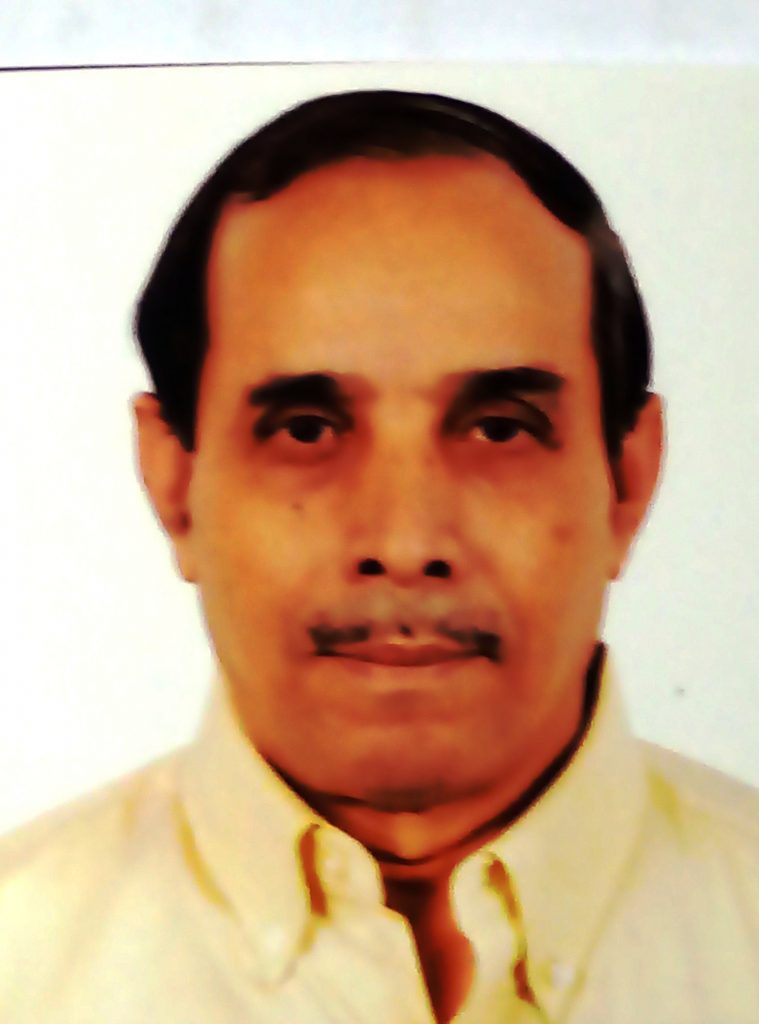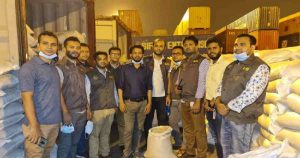I zoomed back 42 years into the past as I was looking at my new portrait taken only yesterday as the old ones do not resemble me in full right now. I did go to make some copies of an old photograph from a photoshop. The man at the counter handed my old photo over to one of his colleagues to make its copies but murmured, it won’t produce good copies, nor reflect your present look. A new snapshot might give a better result, he said. I at once asked him to stop the computer man from copying the photograph and asked if he had a photographer at the shop. Yes, he replied. And the new photograph was the outcome.
This morning I opened a copy of my new photograph and the question that came immediately to my mind, was it this me? Is this person who way back in the year 1977 wrote a huge news item headlined, ‘Is climate changing?’ and carried in the then The Bangladesh Times with which I was working as a Junior Staff Reporter. I did not realise then that this news item of mine was published two years before the Woods whole researchers in the United States aired the hypothesis as to whether the climate of Planet Earth was changing.
The write-up apparently carried by international wire services outside Bangladesh evoked a response from a Greenpeace International leader from continental Europe and the story was carried by most Dhaka newspapers, as far as I remember, on the day following the publication of my story in The Bangladesh Times. The Greenpeace leader did express his support to the story and said that increased frequency of disastrous storms was definitely an indication of changing weather the Earth was facing. However, several days later an Indian meteorologist interviewed by Bangladesh’s official news agency BSS (Bangladesh Sangbad Sangstha) said that the localised storms were definitely increasing in frequency and destructiveness, but these by no means supported a hypothesis that the climate was changing.
In Dhaka apart from my colleagues in the Bangladesh Times, I received words of appreciation from many friends at the National Press Club. I should make special mention of the legendary union leader Gias Kamal Chowdhury, whom I met on way from my office to the press club on the day the story was published. He showered on me his words of praise for the story. My chief reporter at that time, the great Alamgir Mohiuddin, now editor, The Naya Diganta, did edit the story before its publication. Alamgir Mohiuddin later became the News Editor and then the Editor of the Bangladesh Times before joining The New Nation as its editor in the nineties.
The news item in question, however, was by no means my invention. I was just lucky enough to make a news out of the environmental catastrophes that were being experienced in Bangladesh for some years and, based on those, remarks made to me by Prof. Aminul Islam of the Department of Geography, Dhaka University. It was not well-planned research or write-up. The learned professor wanted to share his thoughts as the Centre for Urban Studies (CUS) located at the same department at that time was holding a discussion on a tornado that had ripped through some villages in Vederganj in the greater district of Faridpur.
I did become familiar with many teachers and students of the department as I was regularly writing on the research works done by the CUS on hawkers struggling to earn livelihoods on Dhaka’s streets, vagrants in the metropolitan city. I also did stories on the slums and the appaling conditions of living in those shanty houses, their occupants being mainly people displaced by riverbank erosion that rendered nearly one million people homeless in Bangladesh a year. I did write in The Bangladesh Times on a survey of the Vederganj tornado devastations, done by the CUS under the able leadership of its director Prof (then Senior Lecturer or Associate Professor)Nazrul Islam. Based on that survey Prof Nazrul made a write-up and requested me to help get it published in our paper which was then full of luminaries of English journalism in Bangladesh.
Publication of Prof. Nazrul Islam’s article was by no means at my hand. But it was a coincidence of sheer luck that it was published on the day the discussion meeting on the Vederganj Tornado was held at the CUS. After the discussion, Prof. Nazrul told me his senior Prof. Aminul Islam was interested to talk to me and he would love to receive me at his office room. I did meet him before. A nice-looking healthy dark-complexioned and composed man, Prof. Aminul Islam shared with me his thoughts on the abnormalities he perceived in the weather pattern. Narrating his experience, he said that a disaster like a tornado was unheard of in the land area comprising Bangladesh in the past. But a devastating tornado that lashed Demra and Narayanganj areas changed the notion. It was several miles in diameter and extremely devastating in fury. Spiralling winds of the tornado not only killed many, whipped up temporary dwelling houses and uprooted trees but also pulled hand pumps up with their pipes from the ground. Prof. Aminul Islam said since then tornadoes were being experienced at intervals and the one that hit Vederganj was the last in a series.
Anybody would respect Prof. Aminul Islam for his depth of knowledge, his self-esteem, dedication to his job and the aura of integrity his presence reflected. Hats off to this man who would have emerged as a pioneer of the new thinking if he had adequate exposure to the international scientific community. I have made many breaking stories in my career as a reporter. This report on climate change is one to be really proud of. But I was unaware of its real global significance when I filed the story, although I knew I broke new ground.
(Mostafa Kamal Majumder is the Editor, GreenWatch Dhaka)





